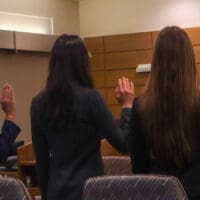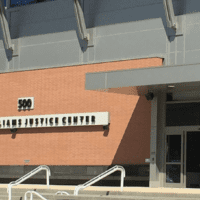

After years of build-up, the Wilmington Learning Collaborative has released a draft of the agreement it will ask participants to sign.
A draft of the agreement formalizing the Wilmington Learning Collaborative says parents, students and teachers will be included in the governing council, which will hire a small team to run the organization.
The draft, announced Wednesday during a community engagement event, is a major step forward the five-year process that will see Wilmington elementary and middle schools carved out of three school districts for special attention.
The point of the plan, pushed by Gov. John Carney’s office and the Delaware Department of Education and now will likely be supported by the Red Clay, Christina and Brandywine School Districts, is to raise the level of learning and achievement among the youngest city learners, partly by helping to address issues in the community and families.
Red Clay, Christina and Brandywine school boards first expressed interest in joining the collaborative in January and February. They were sent the draft agreement last Thursday, June 2, and will vote on it during their July school board meetings.
While no students or parents were directly involved in drafting the memorandum of understanding, the officials who did took into account the views expressed in hundreds of meetings leading up to the forming of the group, according to a statement from the governor’s office.
In the latter stages of negotiation meetings, city educators had a seat at the table which allowed them to contribute to the drafted agreement.
Once the school district superintendents, school board members and others officially release the agreement, it must be ratified by the school district boards before going into effect.
The draft agreement details the roles and responsibilities of those involved with the collaborative.
It says the team created to run the program will include an executive director, who will be hired by the governing council.
The draft said the collaborative will spend the next year honing its plan so that it can go into effect in September 2023.
Read the full 16-page draft agreement here.
Here’s what you need to know:
Funding
The draft establishes a commitment to annual state funding. For Fiscal Year 2023, Carney’s proposed budget includes a $7 million allocation to the WLC.
Most of the $7 million is flexible money that schools can use to address needs that they identify.
The Department of Education will distribute the funds.
Each district must contribute its state unit money — a payment determined by a formula that includes the number of students in the school — to the WLC and can add additional funding.


This graphic shows how the Wilmington Learning Collaboartive will be organized.
Organizational structure
At the top of the pyramid are the districts themselves, who ultimately have the authority over the WLC schools in their district.
A community-based governing council will include:
- Each participating district’s superintendent (or designee)
- Each participating district’s city school board member
- One parent or grandparent of a child at a WLC school from each participating district, appointed by the district’s superintendent and city board member
- One former city educator, appointed by the secretary of education in consultation with Delaware State Education Association, a teacher’s union, and local union affiliates representing the city
- One appointee by the City of Wilmington, nominated by the mayor and appointed by the city council
- One high school student who resides in Wilmington, appointed by the WLC Council
The council will hire and oversee a WLC team that will provide dedicated support to WLC schools.
The districts will work with the collaborative to establish metrics that measure outcomes and make sure the WLC is held accountable.
“The goal of the structure is to ensure schools leverage their flexibility and resources to improve student achievement and wellness, support and empower educators and leaders, and engage families and communities,” the draft read.
Elements of a WLC School
The draft explicitly lays out what schools in the collaborative must do.
Among them:
- WLC schools must establish a community council to engage community members and take their input into consideration.
- The schools also must establish education leader teams. The teams will be made of teachers and non-teachers who will work with their school principal in key decision-making.
- Wraparound services will be funded by the millions that Carney, at the recommendation of the Redding Consortium for Educational Equity, has already allocated. Those services include before- or after-school programs, counseling, tutoring and childcare and other things to support the physical and behavioral health needs of students and families.
Each school will create a plan detailing how it plans to incorporate all this and submit it to the WLC Council for approval. Schools will work with their Community Council to ensure its involvement in the development of the school plan.
Why it exists
The collaborative’s goals are to create consistency for city students; empower educators, school leaders, and communities; and improve outcomes for students in the city’s schools.
Among the challenges that the collaborative is directly trying to address are:
- Fragmented governance across Delaware districts
- Low achievement rates and high absenteeism
- Recruitment and retention of educators
- Facilities and the current condition of school buildings
- Resource sustainability and adequacy
- Institutional racism and other barriers
- Lack of partnerships with higher-ed institutions
- Lack of trust and engagement
- Few early education opportunities like childcare services
- Inconvenient high school options due to geographical challenges
City schools are spread out in four school districts, a result of a bussing-era decision. Red Clay, Christina and Brandywine all have schools within city limits.
Colonial School District also serves city children, but the kids in their schools are bussed out of Wilmington.
The state already has a memorandum of understanding with Christina to help Wilmington students.
To learn more
The collaborative has two more community engagement events this month: Saturday, June 11, at 1 p.m. at The Warehouse, 1121 Thatcher Street, and Tuesday, June 21, at 6:30 p.m. at Warner Elementary School, 801 West 18th Street.
Both are in-person events. Attendees can register here.
Jarek Rutz can be reached by email at [email protected] or by phone at (215) 450-9982. Follow him on Twitter @jarekrutz and on LinkedIn.


Raised in Doylestown, Pennsylvania, Jarek earned a B.A. in journalism and a B.A. in political science from Temple University in 2021. After running CNN’s Michael Smerconish’s YouTube channel, Jarek became a reporter for the Bucks County Herald before joining Delaware LIVE News.
Jarek can be reached by email at [email protected] or by phone at (215) 450-9982. Follow him on Twitter @jarekrutz and on LinkedIn
Share this Post








